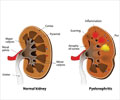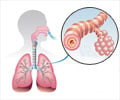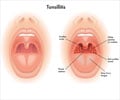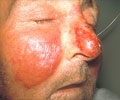Amoxicillin Medication Information
Learn everything you need to know about Amoxicillin-pronunciation, uses, dosage guidelines, indications, and when to take or avoid it.
Get up-to-date information on side effects, precautions, warnings, and proper storage to ensure safe usage.
Explore Amoxicillin brand names commonly used in India and internationally, along with detailed pricing information. Consult your healthcare provider for tailored medical advice.
Generic Name : Amoxicillin Pronunciation : a mox i sill' in ICD Code : Y40.0 Therapeutic Classification : AntibioticsBrand Names or Trade Names of Amoxicillin
India :
GMX (250mg) |
Clavam Tablet (875mg/125mg) |
Uniclave (250mg/50mg) |
Oximox (250mg) |
Ricomox Plus (250mg/250mg) |
Iniclav (500mg/125mg) |
Amoxylac D Syp. |
Erox-L (500mg/70 Million Cells) |
Bromolin D (250mg) |
Ambrox
International :
Amoxil, trimox, Moxatag, Wymox, Amoxil Pediatric Drops, trimox Pediatric Drops
Why is Amoxicillin Prescribed? (Indications)
This medication is a penicillin-like , β-lactam antibiotic. It is used to treat bacterial infections caused by susceptible microorganisms. It prevents the bacterial growth and is used in the treatment of a number of infections such as pneumonia, bronchitis, gonorrhea, and infections of the ears, nose, throat, urinary tract, and skin.When should Amoxicillin not be taken? (Contraindications)
Hypersensitivity.What is the dosage of Amoxicillin?
Adult- PO- The recommended dose range is 0.25 to 3gm.Child- The recommended dose is 25 mg/kg/day in divided doses every 12 hours.
How should Amoxicillin be taken?
Amoxicillin comes as a tablet, capsule, chewable tablet, syrup and pediatric drops to take by mouth. It is usually taken every 12 hours (twice a day) or every 8 hours (three times a day) with or without food. It is recommended that at least 10 days' treatment for any infection caused by Streptococcus pyogens to prevent the occurrence of acute rheumatic fever.What are the warnings and precautions for Amoxicillin?
• Caution should be exercised in patients with history of kidney disease, allergies,asthma, hay fever, hives, any allergy to any other penicillin antibiotic/cephalosporins, who are taking other medications, elderly, children, during pregnancy and breastfeeding.• It may cause dizziness, do not drive a car or operate machinery while taking this medication.
• Take full course of treatment.
• Avoid long-term use of this medication; otherwise it may cause secondary infection.
• Patient may experience stomach pain, severe diarrhea, blood in stool; if it so consult with your doctor.
• Monitor liver function, kidney function and complete blood cell counts regularly while taking this medication.
• Amoxicillin can make birth control pills less effective, therefore using a non-hormone method of birth control is recommended while on amoxicillin.
What are the side effects of Amoxicillin?
Body as a whole - Fungal infections, severe allergic reactions, joint pain, or general ill feeling, severe tingling, sleeplessness, numbness and pain.Gastrointestinal - Nausea, vomiting, diarrhea, antibiotic-associated colitis, black hairy tongue and intestinal bleeding.
Hypersensitivity - Anaphylactic shock, redness of skin, skin inflammation, hives, inflammation of blood vessels, itching, severe blistering and peeling.
Liver - Jaundice and liver inflammation.
Genitourinary - Crystals in urine, dark colored urine and vaginal itching or discharge.
Blood - Anemia, decrease in white blood cells, platelets, increase in eosinophils and bruising.
Central Nervous System - Reversible hyperactivity, agitation, anxiety, sleeplessness, confusion, convulsions , behavioral changes and dizziness.
Miscellaneous - Tooth discoloration, heart burn, white patches or sores inside mouth or on lips, easy bruising and bleeding.
What are the other precautions for Amoxicillin?
Avoid excess dosage.Shake the liquid and pediatric drops well before each use to mix the medication evenly.
The chewable tablets should be crushed or chewed thoroughly before they are swallowed.
Patients with phenylketonuria , should be cautious while taking chewable form of amoxicillin as it may contain phenylalanine.
 MEDINDIA
MEDINDIA
 Email
Email




























